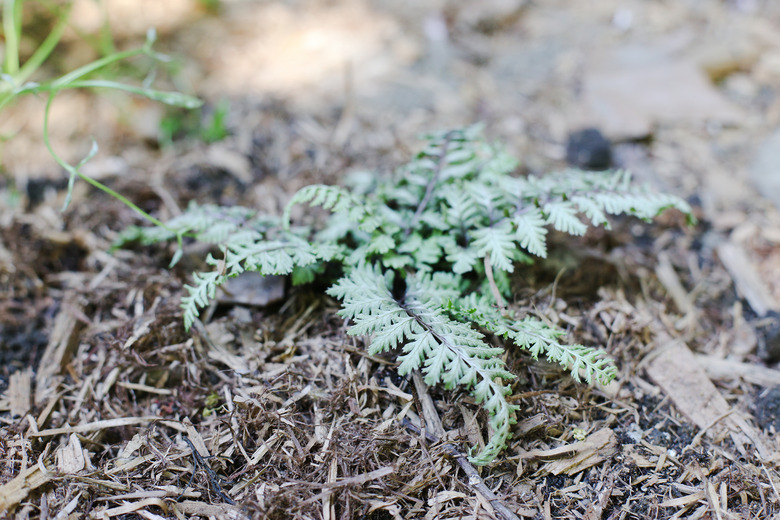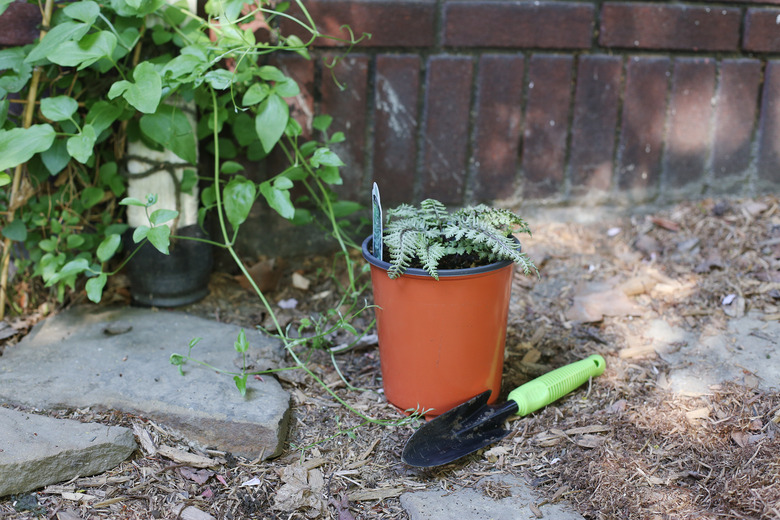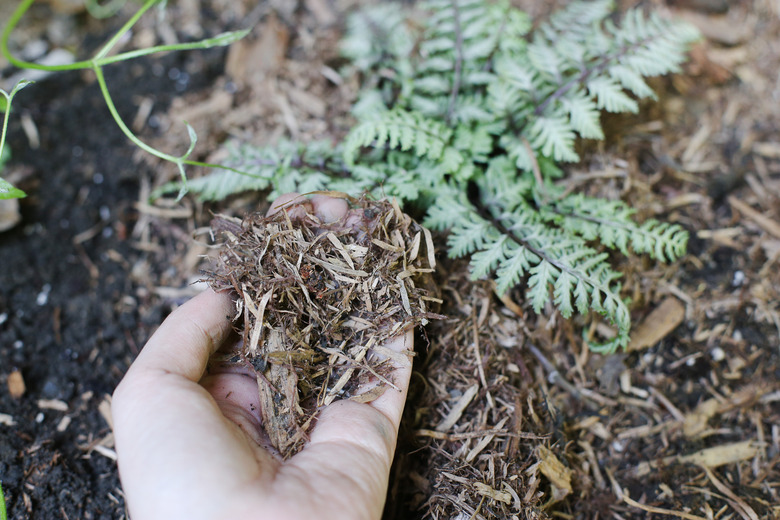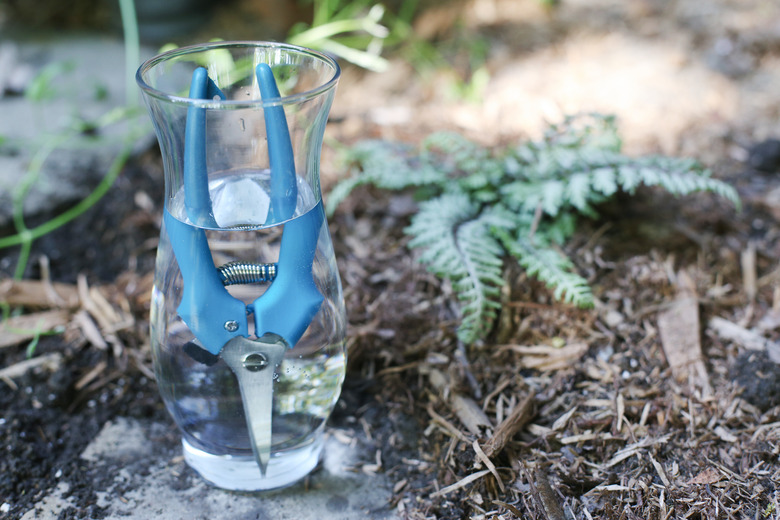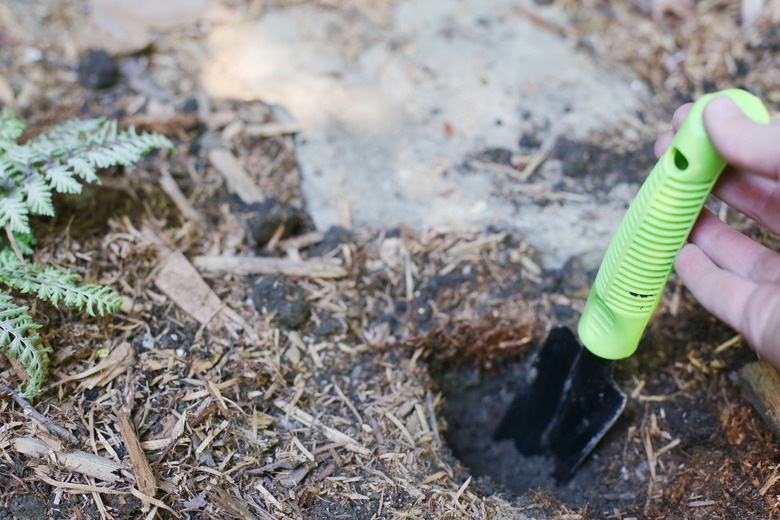How To Care For A Japanese Painted Fern
A native of East Asia, Japanese painted fern (Athyrium niponicum var. pictum) is a show-stopping deciduous fern that features elegant variegated fronds that reflect shades of silvery green and maroon.
A native of East Asia, Japanese painted fern (Athyrium niponicum var. pictum) is a show-stopping deciduous fern that features elegant variegated fronds that reflect shades of silvery green and maroon. In the proper growing conditions, the fern is rarely bothered by serious pests and diseases, rewarding gardeners with an impressive foliage display in exchange for minimal maintenance and care.
Choose a Shady Site
Japanese painted fern is hardy in U.S. Department of Agriculture plant hardiness zones 3 to 8, where it will grow in partial shade to full shade. However, some cultivars such as "Pictum" are only hardy in USDA zones 5 to 8. Frond color will be most vibrant in light shade. In the northern end of its range, the fern can tolerate more sunlight. Cooler climates, such as the Pacific Northwest, encourage better color. The fern does best in a sheltered location with some protection from wind. When frosts strike in fall, Japanese painted fern will die back and undergo dormancy, reemerging in the spring.
- A native of East Asia, Japanese painted fern (Athyrium niponicum var.
- In the northern end of its range, the fern can tolerate more sunlight.
Water Frequently
The fern is not drought tolerant and needs to be watered frequently to keep the soil consistently moist, even wet. Mulch generously in the spring and fall with 2 to 3 inches of an organic material such as leaf mold, pine straw or compost. Avoid manure. Japanese painted fern thrives in well-draining, fertile soil.
Fertilize in early spring, before new growth emerges, with 1/8 cup of a slow-release 14-14-14 granular fertilizer. Sprinkle fertilizer over the soil and water well. Store unused fertilizer in a secure location away from children and pets.
- The fern is not drought tolerant and needs to be watered frequently to keep the soil consistently moist, even wet.
- Mulch generously in the spring and fall with 2 to 3 inches of an organic material such as leaf mold, pine straw or compost.
Check for Rust
If pustules of powdery reddish, yellow, purple or brown spores appear on the undersides of fronds, your Japanese painted fern may be suffering from rust, a common fungal disease. Rust can lead to dead patches on fronds, as well as frond distortion and defoliation. Prune off and destroy heavily infected leaves, disinfecting your pruning shears before and afterwards by soaking them for 5 minutes in a solution that is equal parts rubbing alcohol and water. Rinse with water and air dry. Avoid splashing fronds with water when watering, as this contributes to rust.
No serious insect problems exist for this fern.
Propagate by Division
You can propagate your Japanese painted fern by division in early spring. A robust, healthy plant can be separated into three or four parts and then replanted in the garden. Using a sharp gardening spade, dig down about 4 to 6 inches away from the plant and lift the entire fern out of the ground. Shake off loose soil and pry the roots into sections, using digging forks if necessary to break the plant apart. When replanting, make sure plants have ample air circulation: each fern should have at least 12 inches of space between itself and other plants.
- If pustules of powdery reddish, yellow, purple or brown spores appear on the undersides of fronds, your Japanese painted fern may be suffering from rust, a common fungal disease.
- Prune off and destroy heavily infected leaves, disinfecting your pruning shears before and afterwards by soaking them for 5 minutes in a solution that is equal parts rubbing alcohol and water.
References
- Missouri Botanical Garden: Athyrium Niponicum var. Pictum
- Fine Gardening: Japanese Painted Fern
- Monrovia: Japanese Painted Fern
- Colorado State University: Athyrium Niponicum 'Pictum'
- University of Massachusetts Amherst: Rust Diseases
- University of Florida Extension: Disinfecting Pruning Tools
- Clemson Cooperative Extension: Hardy Ferns
- Clemson Cooperative Extension: Dividing Perennials
